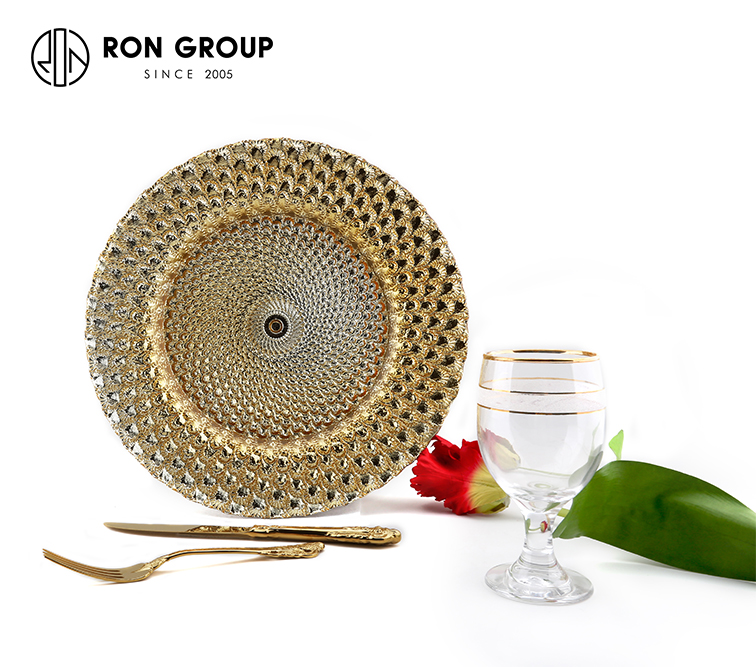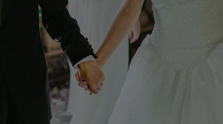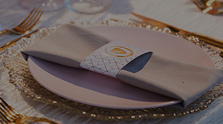How to Use Utensils at a Formal Flatware set
How to Use Utensils at a Formal Flatware set
Have you ever cringed with fear after getting an invitation to a formal dinner party out of anxiety over not knowing which fork to use? If so, you're not alone. Most people don't have enough opportunities to learn or practice formal table manners to be confident that they're using the silverware cutlery correctly.

Before you turn down the invitation,take some time to learn these skills. It's not difficult and may even become second nature with practice. Knowing which fork to use for each course will begin to feel natural, and eventually, you won't have to think about what to do next. You might find that formal dining is fun, once you develop confidence by actually doing it.
FEATURED VIDEO
7 Tips for Every Gardener
Knowing which utensils to use at a formal dinner is essential if you want to make a good impression. Whether you’re at an elegant dinner party or eating at a 5-star restaurant, you can show your knowledge of proper etiquette without being intimidated.
Follow Your Host's Lead
Remember that if you are ever in doubt about which fork to use, follow the lead of the host. Even if he or she uses the wrong fork, you’ll show your respect by doing the same thing as long as you don’t call attention to yourself or embarrass the host.
Start on the Outside and Work Your Way In
Generally, you can follow utensil placement in order from the one farthest from the plate and work your way inward. Forks go on the left, with the salad fork first, and then the dinner fork beside the plate. On the right side of the plate, you will find the knife, appetizer or salad knife, spoon,soup spoon,and oyster fork. The knife blades should be positioned with the cutting sides closest to the plate. The fork and knife closest to the plate are for eating your main course.
The dessert knife fork spoon in most cases will be placed parallel or diagonal to the edge of the table near the top of your plate. In some cases, it may be set on an empty dessert plate. Not all formal place settings will have all the flatware mentioned; you will only find it if you need it for one of the courses.
Be Aware of Proper Eating Techniques
If you want to appear savvy, knowing how to eat with the utensils is important during a formal dinner. Place the fork in the hand you normally eat or write with. The American way to cut meat is to place the fork in the other hand to secure the meat in place and place the knife in your coordinated hand to cut the meat. Then put down the knife and switch the fork to your regular hand to lift the bite-sized pieces to your mouth.
The British way to cut and eat meat is to not switch the fork, but to lift the meat to your mouth with the fork in the hand you don’t normally use. This saves the step of switching hands each time you need to cut the meat.
When eating soup you should use a bowl-shaped or larger oval spoon. Keep the soup bowl firmly on the table; never lift or tilt it. Scoop the soup away from you starting at the center of the bowl. Bring the spoon to your mouth and tilt it while sipping soup from the edge. You should never make a slurping noise when eating soup. Resist the urge to lift the bowl to drink the last few drops that can't be scooped with the spoon.
Bread is finger food, so don't use your fork to eat it. Instead of cutting it, tear off bite-sized pieces and butter them one or two bites at a time. Slathering an entire slice of bread is awkward and will give away your lack of understanding of proper table manners. It can also be very messy.
Additional Tips
When you are eating a formal dinner, remember that the utensils are tools. Each one has a purpose, and if you learn what that is, you shouldn’t have any problems.
At some informal gatherings, it is OK to eat chicken or pork chops with your hands. However, that isn’t the case at formal dinners. You should always use your fork. Don't use your utensils to point or gesture during conversation.
When you drink water, tea, coffee, wine, or any other beverage, put down your utensils before picking up the glass or glass cup. After you use each utensil, rest it on the edge of your dishes plates; don't put it back in the lineup.
Remember that if you make a mistake, most people probably won’t know as long as you don’t call it to their attention. In fact, if you look around the table and watch others, you may find that you know as much or more about formal dinner etiquette than most.
Avoid calling others out on improper etiquette because that shows worse manners than using the wrong fork. It's more gracious to focus on your own etiquette and not worry about others.
RON GROUP,One-stop shop Help you a memorable wedding!
 +86-18098163178
+86-18098163178





















